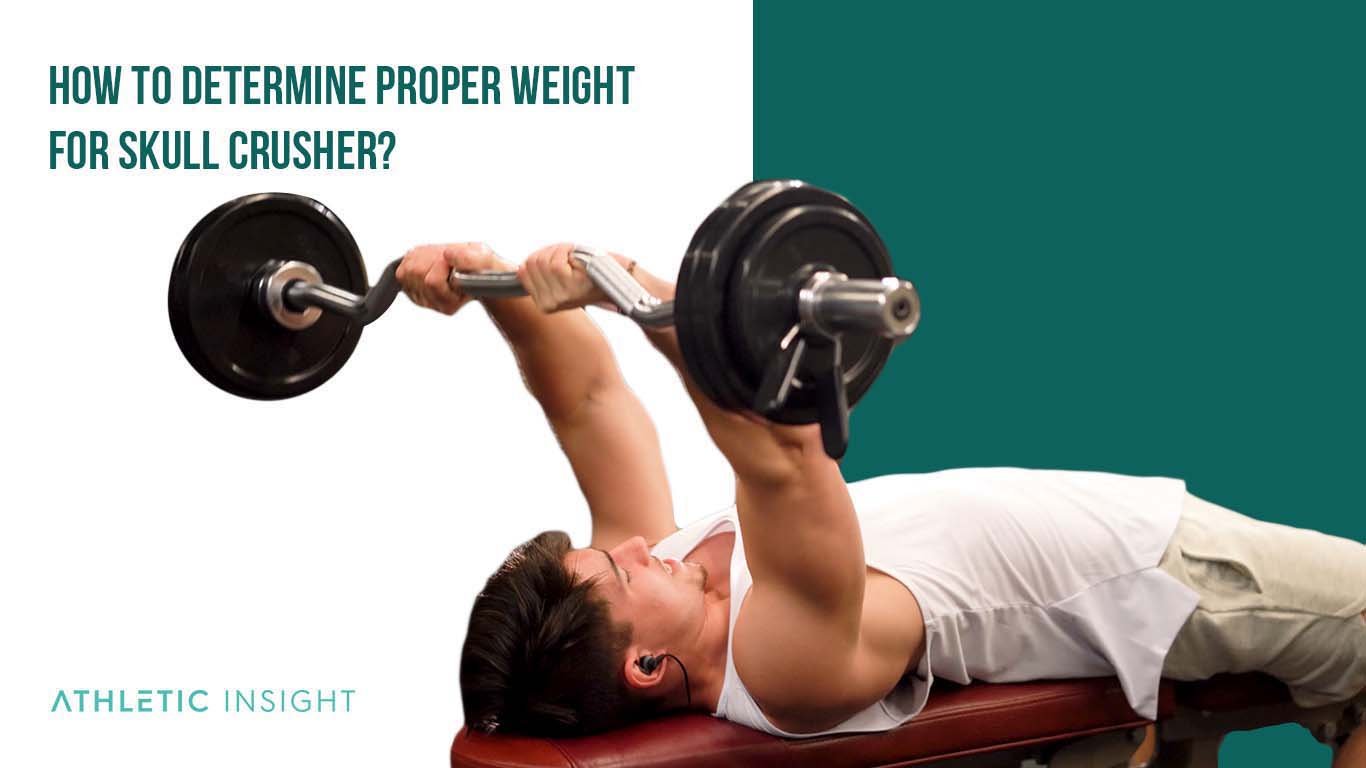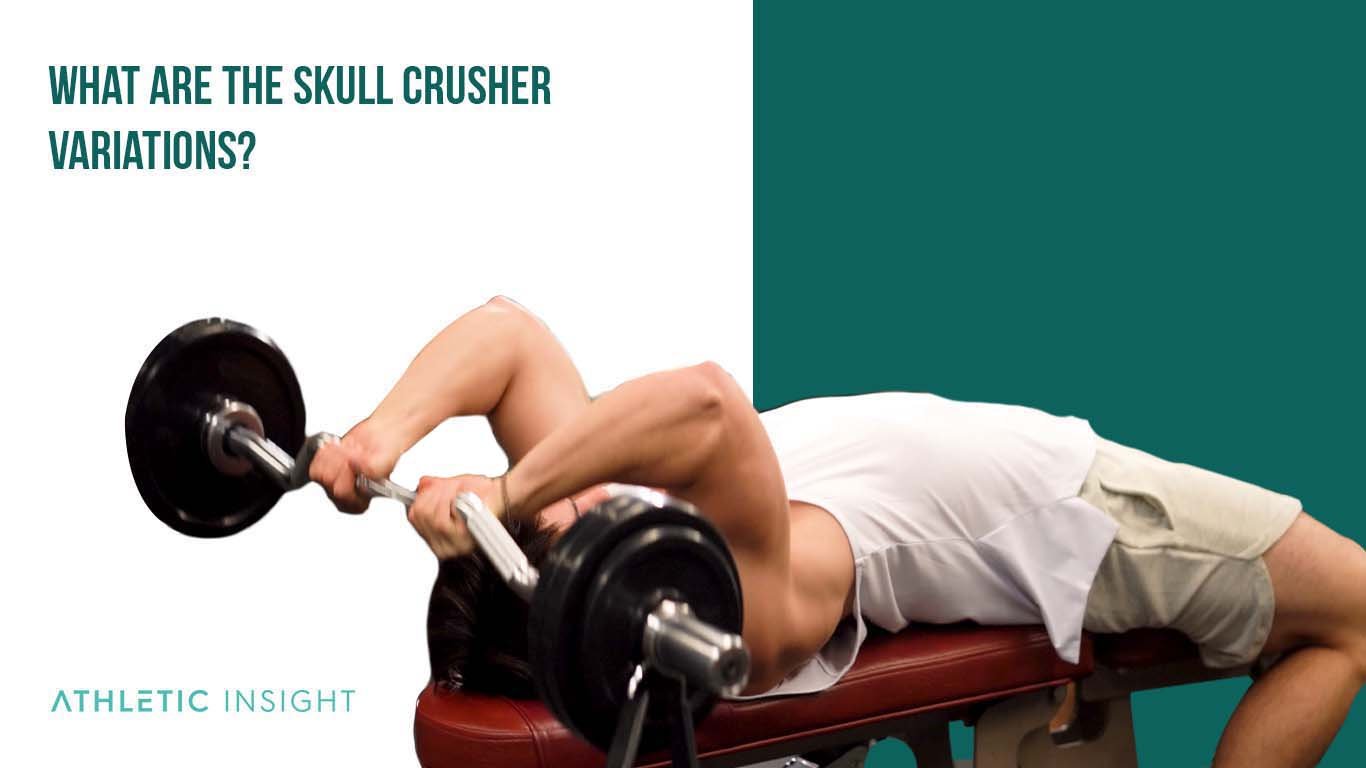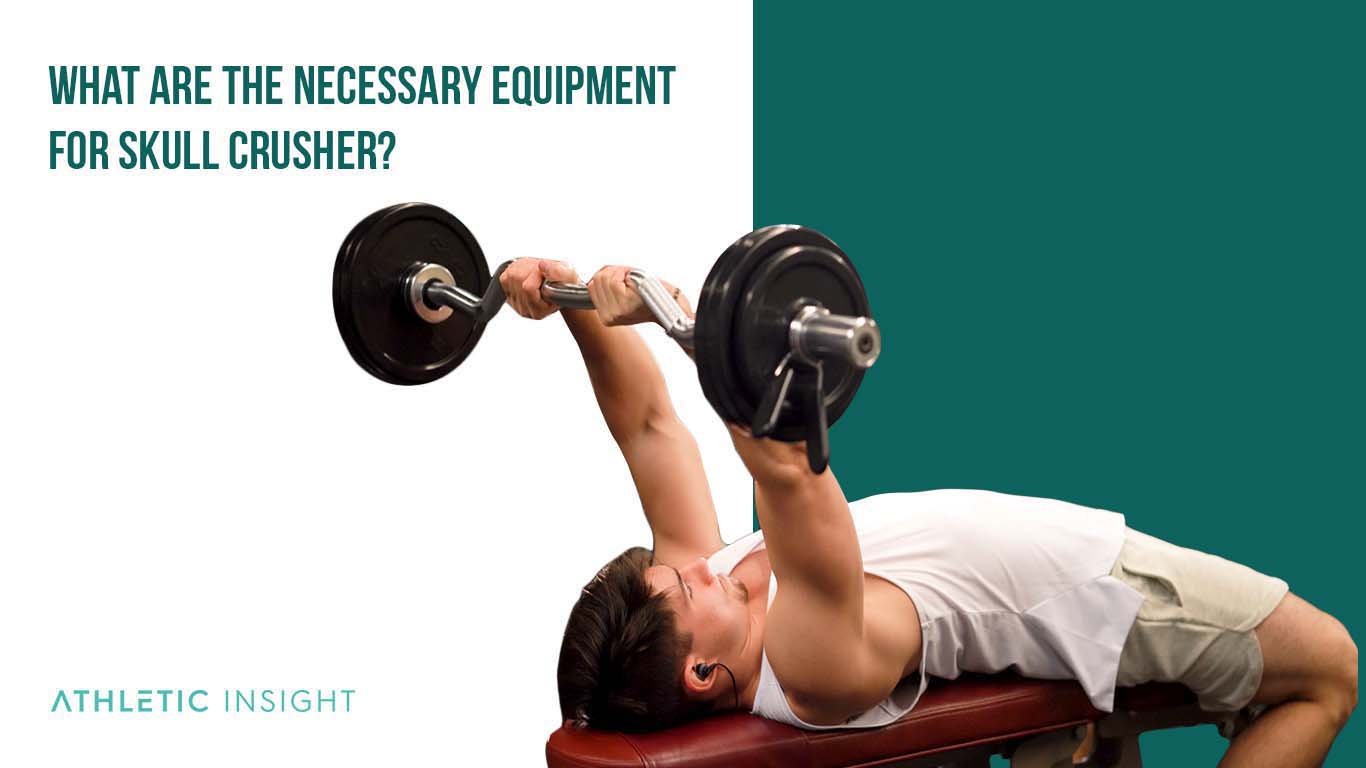The skull crusher, also known as the lying triceps extension, French extension, or French press, is an exercise that isolates your triceps. The lying triceps extension got its nickname because you can damage your skull if you do the exercise improperly.
Skull crushers make a good addition to your regular upper-body workout because they can help increase your arm strength and improve your shoulder stability. In addition, when using the proper skull crusher techniques, this exercise can help tone your upper body and improve your grip strength.
There are several variations of the skull crusher you can try. Still, it’s important to remember that you should always use the proper skull crusher form. Failure to follow the right steps could lead to injuries, especially to the wrist and head.
How to Perform Skull Crusher with Proper Form?
To dominate the skull crusher, you’ll need to understand the proper form for this tricep exercise. Your back should never arch, your shoulders and elbows should be positioned exactly as instructed, and you should always move your arms only at the elbows.
With that understanding, here are the steps to performing a proper skull crusher.
- Sit on a flat gym bench.
- Position your entire body on the bench except for your lower legs.
- Bend your knees and plant your feet flat on the floor.
- Place your hands at both ends of the barbell or pick up your two dumbbells.
- Raise your arms over your shoulders.
- Lower the weight toward the top of your head by flexing your elbows.
- Your upper arms should be perpendicular to your torso at all times.
- Reduce the weight behind your head.
- Reverse the movement until the weight is above your chest.
- Repeat the Skull Crusher steps for a second rep.
What are the benefits of doing Skull crusher?
When incorporating a new exercise into your workout, it’s important to know what benefit that exercise brings. Skull crushers offer several benefits to your upper body. Specifically, since it targets the triceps, the skull crusher is beneficial to your hand and arm strength.
1. Increases strength for triceps.
The skull crusher helps build up your tricep strength. Your triceps are one of the main muscles involved in pushing movements and overhead stability, so this exercise is ideal if you feel you lack in those areas.
2. Improves triceps muscle mass.
The skull crusher requires the triceps to go through a wide range of motions, which is a key to building muscle mass.
3. Gives triceps endurance.
The skull crusher offers a solid workout for your triceps. As your triceps increase in muscle mass, they’ll also increase in endurance.
4. Develops the aesthetic of the triceps.
An increase in tricep muscle mass will help improve the appearance of your arms. The skull crusher is a good exercise if your goal is a better arm appearance.
What are the mistakes for Skull crusher form?
As stated previously, proper skull crusher form is essential to ensure effectiveness and safety. Here are a few of the most common skull crusher mistakes people can make when doing this exercise.
1. Improper Grip
Good skull crusher form requires a firm grip on your weights. If you hold your weights too loosely, you could risk injuring your skull or wrists. Your wrists should be kept straight at all times to avoid losing your grip on the weights.
2. Wrong Elbow Position
The skull crusher’s goal is to isolate your triceps. However, when lowering the weights, you might feel the need to flare your elbows to ease some of the pressure. So instead, keep your elbows in as you lower the weights to ensure you’re getting the proper skull crusher workout.
3. Lowering Motion
When lowering your weights, take care not to lower them directly toward your face. If your hand slips or your wrist gives out, this is a surefire way to injure your skull. Instead, you should lower the weight behind you, making sure not to hit the back of your head on the way up.
4. Too Much, Too Fast
The skull crusher requires lowering weight toward your face. Too much weight or moving too quickly can increase the risk of injury. Choose a weight best suited for your limits and take your time while performing this exercise.
How to Determine Proper Weight for Skull crusher?
The most important thing to remember when setting your weight for a skull crusher is to use a weight you can control. When you first start with the skull crusher, it’s best to use lighter weights and use a spotter.

Which muscles are involved while performing Skull crusher?
The skull crusher exercise isolates your triceps brachii, working your arm muscles from the elbow to the latissimus dorsi (lats) muscles in your mid-back.
What are the Skull Crusher Variations?
If you’d like to change up how you do your skull crusher, here are a few variations and alternatives of skull crusher you can try.

1. EZ-Bar
Keep your hands shoulder-width apart when using the EZ-bar for a skull crusher. The main benefit of using the EZ bar is that it can be easier on your wrists than barbells or dumbbells.
2. Incline Bench
The incline bench skull crusher variation can be done with a barbell, dumbbell, or other loading mechanisms. Adding the incline to the bench will increase how much the triceps flex and work the muscles from new angles. You’ll want to adjust the bench to 30 degrees for this variation.
3. Cable Version With Bar/EZ-Bar
The cable version of the EZ-Bar variation will let you work your triceps from a different angle. You’ll pull from the side for this one, removing the resting spot that you’d normally have at the top.
4. Cable Version With Rope
Using a rope instead of a bar for the cable version will give your triceps an alternative workout. You can also use your hands to change the level of muscle contraction.
5. 45-Degree
In the 45-degree variation, you’ll angle your upper arms about 45 degrees back toward your head. This motion will put more focus on the long head of your triceps.
6. Smith Machine
Using the Smith machine for your skull crusher won’t allow you to make the same arc you would with the bar or dumbbells. However, the pressing movement still gives your triceps a solid and thorough workout.
7. Decline Bench
The decline bench skull crusher will increase focus on the lateral triceps head on the outside of your arm. You’ll use a decline bench to perform the standard lying skull crushers for this exercise.
What are the Necessary Equipment for Skull Crusher?
There are only two pieces of equipment you need to do the best skull crusher. Unless you’re doing a variation, all you’ll need are a weight bench and weights. Just be sure to use the proper weight for your skill level to ensure maximum efficiency and decrease the risk of injury.

What are the Skull Crusher Related Facts?
Here are the answers to some common questions about the skull crusher.
Does Skull Crusher Increase Testosterone?
All forms of weight lifting will increase testosterone production.
Testosterone is a growth hormone produced by the adrenal glands and sex organs and is present in higher quantities in males. Because it’s a growth hormone, testosterone can be found in the muscles. Therefore, as muscle mass increases, so do your levels of testosterone.
Is Skull Crusher a Military Movement?
The triceps extension is a standard military exercise using 10-20-pound weights that is essentially a standing skull crusher. However, instead of performing the exercise standing up, you’ll do your triceps extension lying down.
Is Skull Crusher Dangerous?
Although the skull crusher is a good exercise if you want to increase muscle mass in your triceps, if done improperly, the skull crusher could lead to severe head, elbow, or wrist injuries.
However, if you take precautions, you should be able to perform the skull crusher safely.
- Always use good skull crushers form.
- Don’t use more weight than you can handle.
- Don’t ignore severe pain.
Is Skull Crusher Essential?
The skull crusher isn’t an essential exercise. Still, it’s the ideal exercise to choose if you want to focus on increasing the size and improving the appearance of your triceps.
Although other exercises can replace the skull crusher, if bigger arms are your goal, this exercise should be worked into your routine.
What Can Replace Skull Crusher?
There are a few exercises that can replace the skull crusher.
1. Close-Grip Bench Press
The close-grip bench press isolates the triceps in much the same way the skull crusher does. However, the narrow grip on the barbell also targets the chest.
2. Overhead Triceps Extension
The overhead triceps extension targets the triceps and can be done with the same dumbbell, barbell, or EZ-bar you’d use for a skull crusher. This is a good alternative for those who have joint or elbow problems.
3. Rope Pushdowns
Instead of lying on your back, you’ll work your triceps from a different angle using the rope attachment on a pulley. For the rope pushdown, you’ll hold your hands at chest level with your arms at your sides, then fully extend your arms downward.
The skull crusher is an exercise that works well at targeting the triceps. They’re a solid choice for bodybuilders who want to build muscle mass and anyone who wants to increase their back and arm strength.



